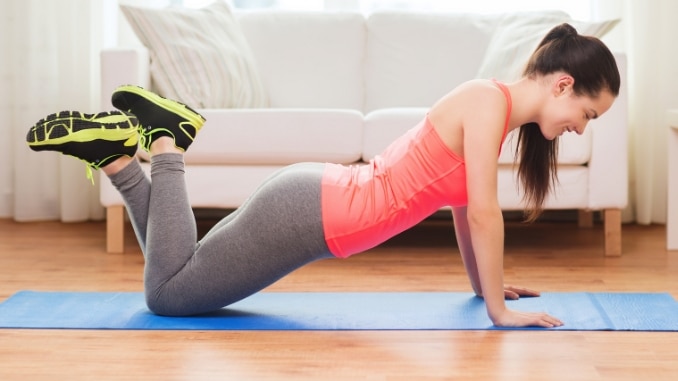Push-ups are an excellent exercise for overall strength and fitness, targeting multiple muscle groups, including the chest, shoulders, triceps, and core.
Despite their benefits, many people experience wrist pain [1] during push-ups, hindering their workout routines.
This article aims to provide tips, modifications, and remedies to prevent and heal wrist pain during push-ups, ensuring you can continue to enjoy this powerful exercise without discomfort.
What Causes Wrist Pain During Push-Ups?
During push-ups [2], the wrists support a significant portion of body weight. This load can be stressful, especially if proper form neutral wrist position is not maintained.
Common Causes
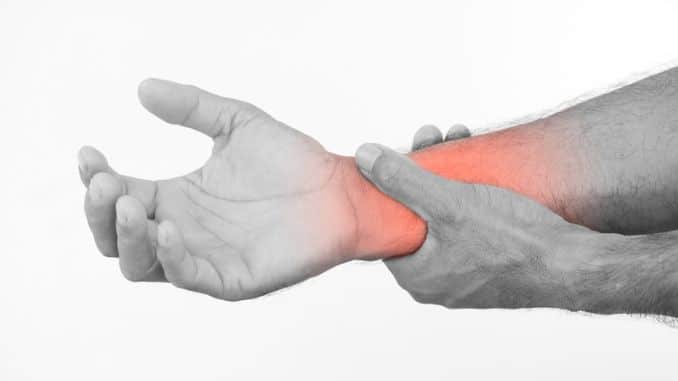
- Improper Hand Positioning: Incorrect hand placement can lead to excessive strain on the wrists.
- Weak Wrist Muscles or Limited Mobility: Insufficient strength or flexibility in the wrists can contribute to pain.
- Pre-existing Wrist Injuries or Inflammation: Conditions like carpal tunnel syndrome can exacerbate pain.
- Overuse or Repetitive Strain: Continuous stress without adequa
Dr. Joanne Y. Zhang, is a hand, wrist, and elbow surgeon with Hoag Orthopedic Institute in Southern California. She emphasizes the importance of proper wrist positioning and strengthening exercises to prevent and manage wrist pain effectively.
Best Push-Up Modifications for Wrist Pain
1. Use of Push-Up Handles or Parallettes
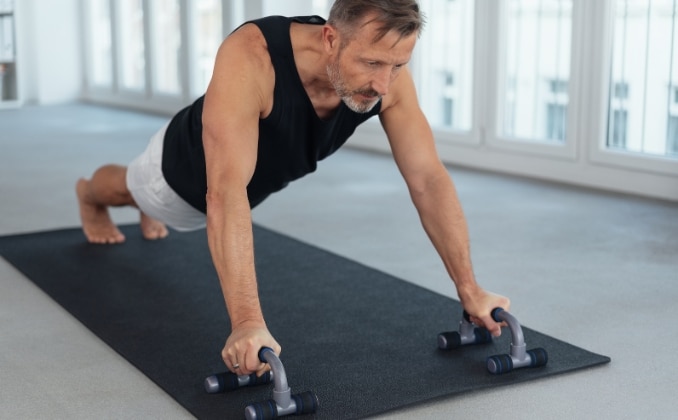
These tools provide a more ergonomic grip, alleviating wrist strain.
2. Inclined Push-Ups
Performing push-ups with your hands on an elevated surface decreases the pressure on the wrists by changing the upper body strength and angle.
For this exercise to heal wrist pain when doing push-ups, you may use a sturdy chair with a backrest.
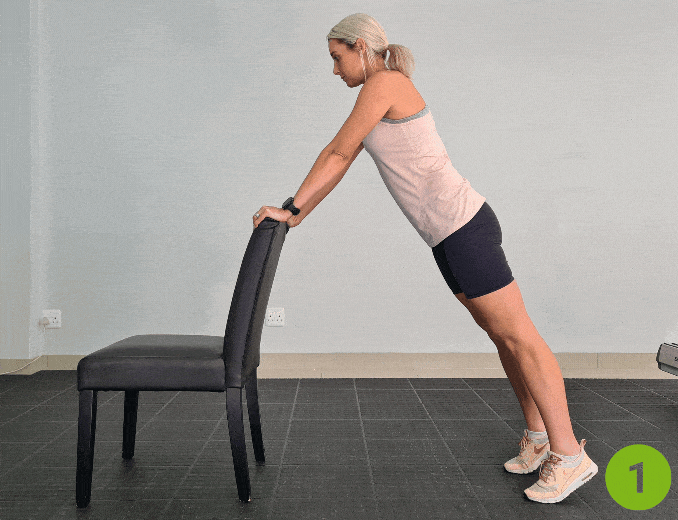
- Begin in an upright standing position with the back of the chair in front of you, with your feet shoulder-width apart, maintaining good alignment with your head, shoulders, hips, and legs.
- Place your hands on the back of the chair and step your feet backward to increase the angle of your body.
- Engage your core and bend your elbows to lower your upper body towards the chair.
- Raise back up to return to the starting position and repeat the movement.
- Complete the movements with 5-10 repetitions.
3. Push-Ups on a Soft Surface
A cushioned surface can reduce impact and provide additional support. You may utilize a yoga mat for a cushioned surface.
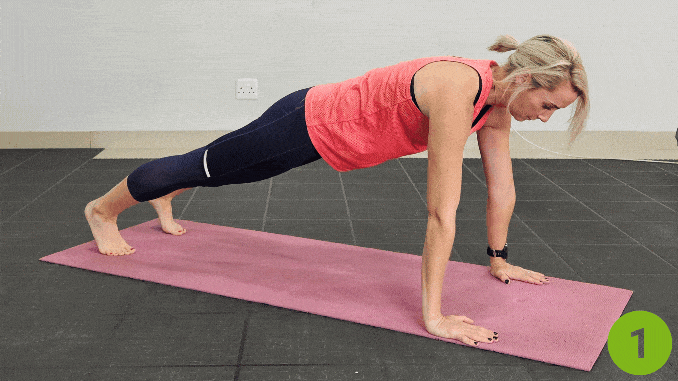
- For this exercise to heal wrist pain during push-ups, begin in a straight-arm plank position on the yoga mat with your hands beneath your shoulders, maintaining good alignment with your head, shoulders, hips, and toes.
- Engage your core and bend your elbows to lower your upper body towards the mat.
- Raise back up to return to the starting position and repeat the movement.
- Complete the movements with 5-10 repetitions.
4. Forearm Plank Push-Up
These exercises work for similar muscle groups without stressing the wrists.
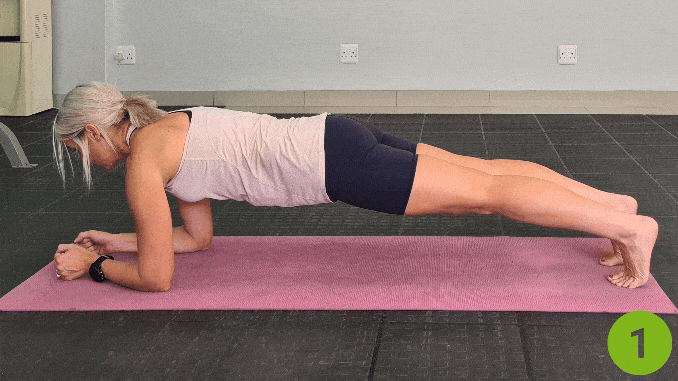
- Begin in a straight-arm plank position on the yoga mat with your arms beneath your shoulders, maintaining good alignment with your head, shoulders, hips, and toes.
- Tighten your abdominal muscles, then lower your knees to the floor.
- Raise back up to return to the starting position and repeat the movement.
- Complete the movements with 5-10 repetitions.
5. Wall Push-Ups
Performing push-ups against a wall places less strain on the forearm muscles and the wrists while still activating the chest muscles.
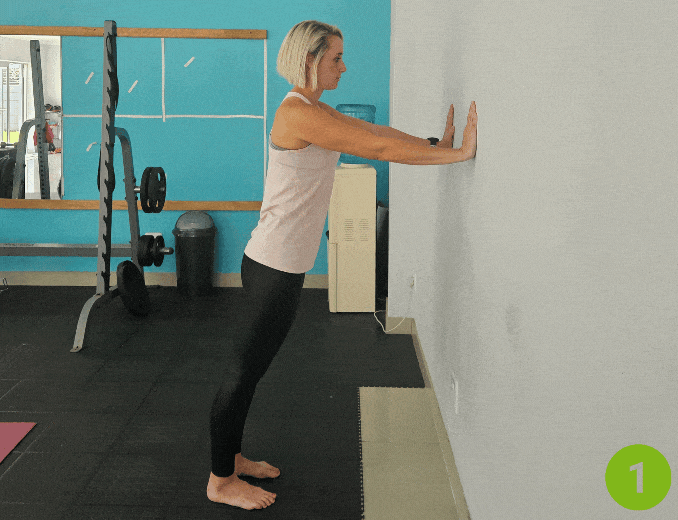
- Begin in an upright standing position in front of a wall with your feet shoulder-width apart, maintaining good alignment with your head, shoulder, hips, and legs.
- Press your hands on the wall and step your feet backward to increase the angle of your body.
- Engage your core and bend your elbows to lower your upper body towards the wall.
- Raise back up to return to the starting position and repeat the movement.
- Complete the movements with 5-10 repetitions.
6. Resistance Band Presses
These exercises engage the chest muscles without direct pressure on the wrists.
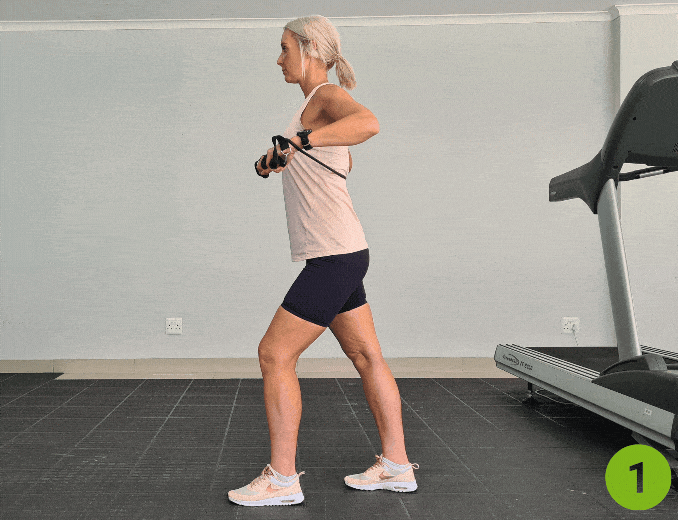
For this exercise, kindly use resistance tubing.
- Begin in an upright standing position with your feet shoulder-width apart, maintaining good alignment with your head, shoulders, hips, and legs.
- Wrap a resistance tubing around your back and hold each handle with each hand at chest level.
- Step one foot forward and slightly bend your front knee.
- Engage your core and pull the resistance tubing forward, creating resistance to the band.
- Return to the starting position and repeat the movement with 10 repetitions.
Wrist Strengthening Exercises for Push-Ups
Prehab and Rehab for Wrists: Strengthening the front joints of wrists is crucial to preventing injury.
1. Wrist Curls and Extensions with Light Weights
These exercises build wrist strength and endurance.
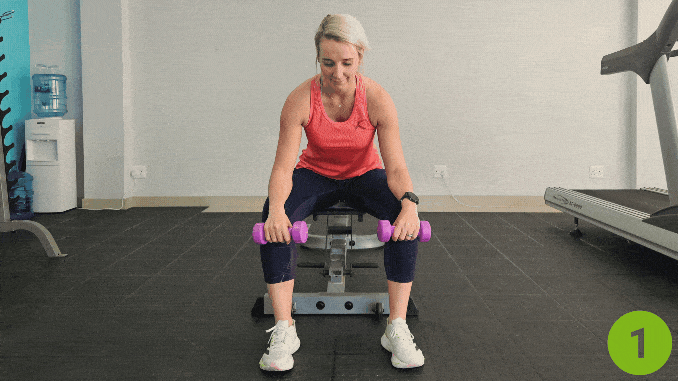
For this exercise, kindly use mini dumbbells or a can of soup.
- Begin in an upright sitting position on a bench with your knees bent and feet flat on the floor.
- Hold a mini dumbbell on each hand, hinge through your hip to bend your upper body forward as you place your elbows on your thighs and let your wrist hang in front of your knees with palms facing down.
- Tighten your abdominal muscles.
- Lift your hands in a slow and controlled manner while still pressing your arms on your thighs.
- Lower your hands to return to the starting position and repeat the movement with 10 repetitions.
2. Isometric Holds and Grip Strength Exercises
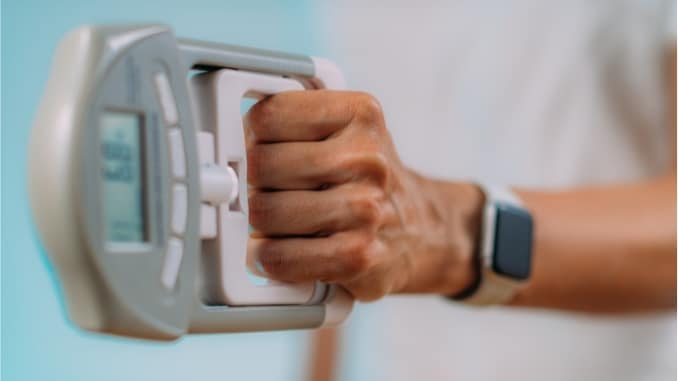
These exercises improve wrist stability and strength.
3. Wrist Rotations and Range-of-Motion Drills
These drills enhance flexibility and reduce the risk of injury. Incorporating these wrist-strengthening exercises for push-ups can make a significant difference.
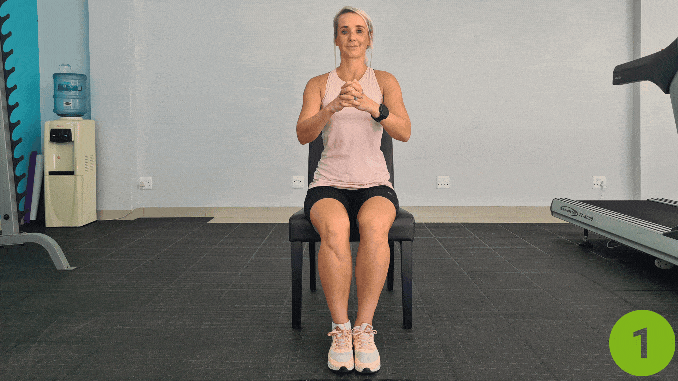
You can do this exercise either standing or seated.
- For this exercise to heal wrist pain during push-ups, gegin in an upright sitting position on a chair with your knees bent and feet flat on the floor, maintaining good alignment with your head, shoulders, and hips.
- Engage your core.
- Interlace your hands together at chest level, then slowly move your hands in a circular motion.
- Repeat the movement with 10 repetitions.
Stretches to Build Wrist Strength and Mobility
1. Wrist Rolls and Flexor Stretches
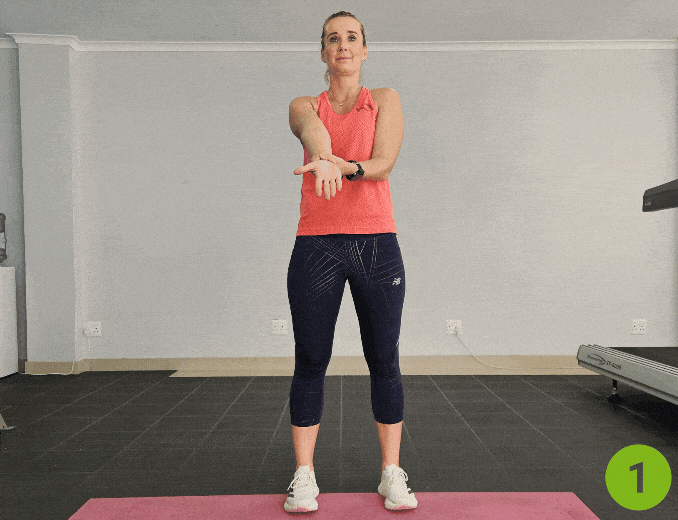
These stretches improve flexibility and prepare the wrists for exercise.
- Begin in an upright standing position with your feet hip-width apart, maintaining good alignment with your head, shoulders, hips, and legs.
- Engage your core and extend one arm forward with palms facing up.
- Place your opposite hand underneath the elbow of your extended arm, then slowly twist your arm and hand from side to side while stretching your fingers.
- Repeat the movement with 10 repetitions. Relax and repeat the movement on the opposite arm.
2. Static Stretches

Praying Hands Stretch: This stretch improves wrist flexibility.
3. Tabletop Wrist Stretch
A gentle stretch to enhance mobility. Regularly practicing these stretches can provide effective wrist pain relief for push-ups.
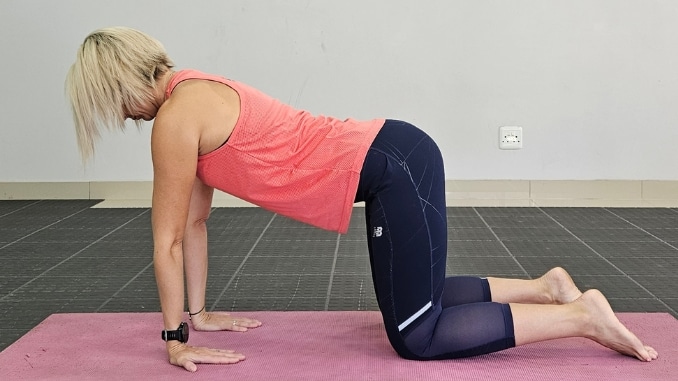
- Begin in a tabletop position with your arms beneath your shoulders and your knees underneath your hips.
- Maintain good alignment with your upper body.
- Tighten your abdominal muscles, then turn your hands with your fingers pointing towards your knees.
- Hold the position for several deep belly breaths, in through your nose and out through your mouth.
Home Remedies for Sore Wrists
- R.I.C.E Method: Rest, Ice, Compression, and Elevation are essential for reducing pain and inflammation.
- Topical Relief: Anti-inflammatory creams or gels can provide quick pain relief.
- Heat Therapy: Applying heat promotes circulation and healing.
- Epsom Salt Soaks: Soaking the wrists in Epsom salt can reduce swelling and soothe pain.
When to Talk to a Doctor
- Red Flags: Persistent pain, swelling, or numbness during or after push-ups are signs to seek medical advice.
- Potential Diagnoses: Conditions like tendinitis, carpal tunnel syndrome, or fractures may require professional intervention.
- Seeking Professional Help: If home remedies and modifications do not alleviate the pain, consult a healthcare provider.
Conclusion
Protecting your wrists is essential for achieving long-term fitness goals. By exploring push-up modifications, building wrist strength, and seeking expert advice when necessary to avoid wrist pain, you can enjoy pain-free workouts.
Share your experiences and tips on wrist pain in the comments below to help others in their fitness journey.
Enjoy the amazing benefits of exercise with a safe, but also challenging seated workout program – with the added benefits of ankle/wrist weights! Check out this Safe and Strong Seated Workout – Ankle and Wrist Weight Edition.
Frequently Asked Question
Will my wrists get stronger from push-ups?
Yes, push-ups can help strengthen your wrists as they engage the muscles around the wrist joint. However, it’s important to start gradually and ensure proper form to avoid injury.
How many pushups should I do a day?
The number of pushups you should do depends on your fitness level. Beginners might start with 10-15 pushups a day and gradually increase as they build strength. Aim for 3 sets of 10-15 pushups, but listen to your body and avoid overexertion.
What triggers wrist pain?
- Overuse: Repetitive motions, such as typing or lifting.
- Injury: Falls or sudden impacts.
- Poor Posture: Incorrect wrist positioning during activities.
- Medical Conditions: Conditions like carpal tunnel syndrome or arthritis.
What worsens wrist pain?
- Continuing the Activity: Ignoring the pain and continuing the activity that caused it.
- Lack of Rest: Not giving your wrists enough time to heal.
- Improper Treatment: Using incorrect methods to treat the pain, such as applying heat when ice is needed.
- Ignoring Medical Advice: Not seeking medical help when needed.

